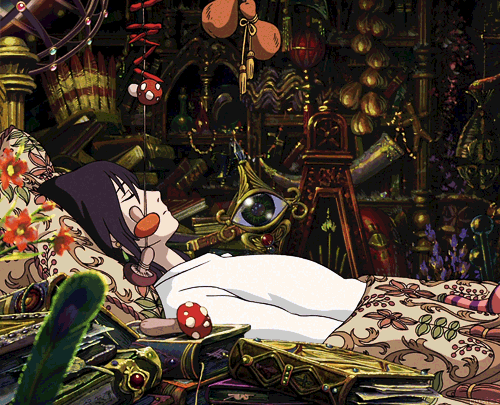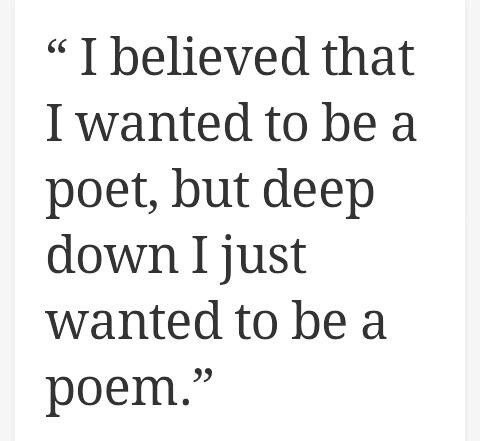Text
youtube
Howls Moving Castle Theme Song! (Listen if you'd like to emerge yourself into Howl and Sophie's world!)
0 notes
Text
What is "Howls Moving Castle" About?
Enter the enchanting world of Howls Moving Castle, where Sophie, an 18-year-old girl who lives in a magical town called Ingary. She is matched with the misfortune of being the eldest of 3 sisters and is destined to fail if she ever desired to seek her fate. But when she attracts the attention of the Witch of the Waste, she finds herself caught in a spell that turns her into a frail old woman. To break the spell, she must find the daunting moving castle in the hills of Ingary. This castle belonged to a mysterious wizard named Howl. To break the cruel spell, Sophie must make a deal with a fire demon, tolerate Howls cowardly behaviour, and face the Witch of the Waste. But as her journey unfolds, there is a lot more that meets the eye when it comes to howl, the fire demon and Sophie herself.

0 notes
Text
Why Does It Matter?
Embark on the mesmerizing universe created by Diana Wayne Jones in her novel, Howls Moving Castle. Howls Moving Castle is a timeless tale that grabs readers and takes them into a realm where self-discovery, the butterfly effect of one's choices, and the power of love take stage. The novel defies the norms of our traditional fairy tale and offers readers a fresh perspective into the complexities of human nature, the impact of war, the journey of self-discovery, and the intricacies of love. The rich tapestry of characters, who each give readers unique insights into multifaceted themes, sets Howl’s Moving Castle apart. Sophie and Howl’s journeys in magic, self-discovery, and love, captivate readers. Howl’s Moving Castle is not just a story; it’s a mesmerizing experience that invites its readers to consider the boundaries of creativity and allows them to experience timeless themes in a captivating manner.

0 notes
Text
Abandoning Tropes
Diana Wayne Jones masterfully subverts readers to see Sophie often abandoning the classic fairy-tale tropes. Usually, in fairy tales, readers see women sitting back and waiting to be saved, but Sophie defies that. In the novel, readers see Sophie refuse to wait around and be saved from her curse by a man. Instead, she seeks her own fortune to save herself: “It was best just to go. Sophie decided she would write to both her sisters when she got to wherever she was going” (34). Moreover, Sophie’s transformation into an old woman develops into a metaphor for the social pressures that are placed upon women regarding their appearance: “Don’t worry, old thing…you look quite healthy. Besides, this is much more like you really are” (33). Sophie offers women more power over themselves by defying those expectations and accepting the fact that we all age, and that’s okay. This aspect allows readers to sit back and think about the norms that they are so accustomed to. For Howl, he challenges the stereotypical image of a powerful entity, or more simply, a man. Howl is not depicted as being invincible or in another world; instead, he is riddled with self-doubt. In the story, Howl finds himself scared to engage to his full potential in his world of magic. Howl is also seen attempting to avoid challenges in his life, which highlights how, in human nature, people often do the same thing.

0 notes
Text
Self-Discovery
Jones encapsulates Sophie as a reserved young woman and eventually turns into a powerful individual, which becomes the central theme of the narrative. As the story unfolds, readers can explore the characters strengths, weaknesses and see the characters find their ability to challenge societies expectations of them. Each character has their own unique story, individuality, and challenges. Thus, this invites the young or old readers to embrace their own uniqueness. Even though Howl is a magical being, his emotional depth sets him apart from other characters. As stated previously, Howl is riddled with fears and insecurities and is labelled as a soulless individual. But, throughout the novel, readers see Howl develop a meaningful connection with Sophie – this adds authenticity to his character. It is often depicted that strong magical beings must be solely measured with the amount of power they have, but in reality, power lies in emotional resilience.

0 notes
Text
Breaking Down Walls and Accepting Love
Howls overall character is a looking glass for readers to explore the complexities of one's own life. Howl starts off creating an emotional façade to keep others away from him. This façade is a metaphor for the walls that people build in order to protect their wellbeing from people who desire to enter their life. Howls journey of breaking down those walls and deciding to love and trust Sophie prompts readers to consider their own walls that they’ve put up because of past traumas. The theme of love is a very prominent one in Howls Moving Castle. Though, the story even goes beyond what one would call “romance.” This story confronts the transformative and healing aspects of what a genuine connection can do to one’s life. Even if these connections are seen as romantic or platonic. Howls vulnerability and his quest to find his missing heart, and Sophie's unconditional love and desire for him, illustrate how powerful love can be. The story lets readers see the gritty aspects of love, like patience and compromises. The story shows that love can break curses, heal wounds, and be a good change in people’s lives.

0 notes
Text
Experimenting with Magical Realism
“Magical realism as a literary mode is often subversive and transgressive, questioning the values and assumptions of the dominant society that it depicts. Young adult literature, by contrast, is typically thought to serve a socializing function, helping to integrate young readers into adult society” (Latham).
In Howl’s Moving Castle, magical realism is more than just a narrative strategy; it reshapes the very fabric of the story. As people traverse the enchanting pages, readers encounter a fusion of the wondrous and the ordinary. The imaginative characters, the walking castle, and the enthralling occurrences coincide in a harmonious fashion. These devices create a mesmerizing experience that defies the traditional constraints of genres. Jones’s use of magical realism blurs the lines between magic and reality, which challenges readers to reevaluate and analyze different perceptions of the world. Immerse yourself in a world where the mundane refuses to exist and where magic takes hold.

0 notes
Text
Elements of Fairy tale in Howls Moving Castle
“The first thing you always know about a fairy tale is that you are in it. Immediately, it announces that it is a form and that you are inside the form” (Bernheimer, 66)
Howls Moving Castle defines the traditional fairy tale, but still has fairy tale elements scattered throughout. In reference to Kate Bernheimer’s four aspects, Howl's Moving Castle touches on them all.
Flatness: In fairy tales, characters exhibit a certain flatness. They lack character development and character depth. But in Howls Moving Castle, that is not the case. Howl and Sophie both embody complex individual traits. Sophie is an unwavering heroine, and Howl is a mysterious magical being, which are symbolic in the traditional fairy tale.
Abstraction: Howls Moving Castle allows readers to interpret different events in the story beyond just the literal. Howls Castle itself is an abstract entity that symbolizes his desire to run from problems and his lack of stability in life. Sophie's curse represents the outlook that society has on women and their beauty.
Intuitive Logic: In Howls Moving Castle, there are magical occurrences that have no explanation. The novel expresses a sense of wonder and has a dreamlike flow that does not need reasoning. The world of Howls Moving Castle has magic that seamlessly intertwines with their reality.
Normalized Magic: Howls Castle, magical spells, and different realms all align with Bernheimer’s concept of normalized magic in the genre of fairy tales. All these different aspects contribute to the world of Howls Moving Castle. Magic is so normalized in this universe that it itself becomes almost mundane.

0 notes
Text
Passage Analysis
“‘I think we ought to live happily ever after," and she thought he meant it. Sophie knew that living happily ever after with Howl would be a good deal more hair-raising than any storybook made it sound, though she was determined to try. "It should be hair-raising," added Howl’” (210).
This quote perfectly represents Howl, Sophie, and the tropes that they rightfully defy. When Howl declares the two will “live happily ever after,” he seems to have hope in his tone, as if he himself desired the classic fairy tale happy ending that every person gets. But throughout the novel, Howl was depicted as the opposite of someone who desired such a thing. Considering he was always referred to as a “soul eater” or often moved on quickly when another woman was being stubborn, Howl shows readers that there is a sense of optimism and commitment. It’s clear to readers that Howl has established trust with Sophie, and he believes the two can have a lasting connection. However, Howl also acknowledges that happily ever after is not realistic, so he adds, “It should be hair-raising.” This establishes the idea that love and relationships do not follow the traditional fairy tale elements. The passage even clearly states, “Howl would be a good deal more hair-raising than any storybook made it sound,” which adds a layer of realism. This statement aligns with the theme that genuine relationships can be fulfilling, but they will have challenges. Though these challenges do not deter Sophie, they do make her more determined, which highlights how powerful she is as a character. Thus, the exchange between these characters perfectly captures the complexity of relationships and grounds the understanding in an idealized world.
0 notes
Text
Critical Article
Caroline Webb’s article claims that Howls Moving Castle invites readers to re-evaluate the perceptions that are placed upon witches and crones by society. Howls Moving Castle challenges the classic narrative and conventional expectations and perceives these types of characters as heroes compared to the demonized figures society claims them to be. For instance, Howl is described as "heartless,” though upon further examination, Howl is only ‘heartless’ because of a sacrifice he made, which was giving his soul to Calcifer, a demon, to keep him alive. Howls act of selflessness is the reason why he doesn’t have a soul, but he can also be confused with the general outlook on witches and crones. Thus, Howls Moving Castle pushes the boundaries of the conventional “witch” figure and prompts readers to reconsider.
Webb, Caroline. "'Change the story, change the world': witches/crones as heroes in novels by Terry Pratchett and Diana Wynne Jones." Papers: Explorations into Children's Literature, vol. 16, no. 2, Dec. 2006, pp. 156+. Gale Academic OneFile, link.gale.com/apps/doc/A161909183/AONE?u=otta77973&sid=bookmark-AONE&xid=4c1b3b6a. Accessed 15 Nov. 2023.

0 notes
Text
Publisher Website "Howls Moving Castle"
Diana Wayne Jones' Interview Regarding The Movie Adaptation
youtube
0 notes
Text
Bibliography
Bernheimer, Kate. “‘Fairy Tale Is Form, Form Is Fairy Tale.’” The Writer's Notebook (NYC, NY & Portland, OR: Tin House Books) (2010): n. pag. Print.
“Diana Wynne Jones – Howl’s Moving Castle (1986) Review.” A Sky of Books and Movies, A Sky of Books and Movies, 2 Mar. 2023, jeroenthoughts.wordpress.com/2023/03/02/diana-wynne-jones-howls-moving-castle-1986-review/. Accessed 28 Nov. 2023.
“Howl’s Moving Castle.” HarperCollins, 2020, www.harpercollins.com/products/howls-moving-castle-diana-wynne-jones?variant=32217986629666. Accessed 28 Nov. 2023.
“Howl’s Moving Castle Book Cover - Google Search.” Google.com, 2013, www.google.com/search?q=howl%27s+moving+castle+book+cover&tbm=isch&chips=q:howl%27s+moving+castle+book+cover,g_1:original:X5lw6oN5HWw%3D&hl=en&sa=X&ved=2ahUKEwjX0ef_v-WCAxUFK2IAHTrGC9cQ4lYoAHoECAEQNQ&biw=710&bih=779#imgrc=Z1C4ZTi5F5rxFM. Accessed 28 Nov. 2023.
Latham, Don. “The Cultural Work of Magical Realism in Three Young Adult Novels.” Children’s Literature in Education, vol. 38, no. 1, Springer. 233 Spring Street, New York, NY 10013. Tel: 800-777-4643; Tel: 212-460-1500; Fax: 212-348-4505; e-mail: [email protected]; Web site: http://www.springerlink.com, 2023, pp. 59–70, eric.ed.gov/?id=EJ757663. Accessed 28 Nov. 2023.
Lea, Richard. “Howl’s Moving Castle by Diana Wynne Jones – Fantastical Fun, Fantastically Human.” The Guardian, The Guardian, 18 Dec. 2015, www.theguardian.com/books/2015/dec/18/howls-moving-castle-by-diana-wynne-jones-fantastical-fun-fantastically-human. Accessed 28 Nov. 2023.
Migliori, Le. “Merry Go Round of Life - Howl’s Moving Castle (Joe Hisaishi).” YouTube, YouTube Video, 5 June 2013, www.youtube.com/watch?v=HMGetv40FkI&t=3s&ab_channel=LeMiglioriColonneSonoredeiFilm. Accessed 29 Nov. 2023.

0 notes
Text
"Howls Moving Castle" (Book Cover)

“Howl’s Moving Castle Book Cover - Google Search.” Google.com, 2013, www.google.com/search?q=howl%27s+moving+castle+book+cover&tbm=isch&chips=q:howl%27s+moving+castle+book+cover,g_1:original:X5lw6oN5HWw%3D&hl=en&sa=X&ved=2ahUKEwjX0ef_v-WCAxUFK2IAHTrGC9cQ4lYoAHoECAEQNQ&biw=710&bih=779#imgrc=Z1C4ZTi5F5rxFM. Accessed 28 Nov. 2023.
1 note
·
View note
